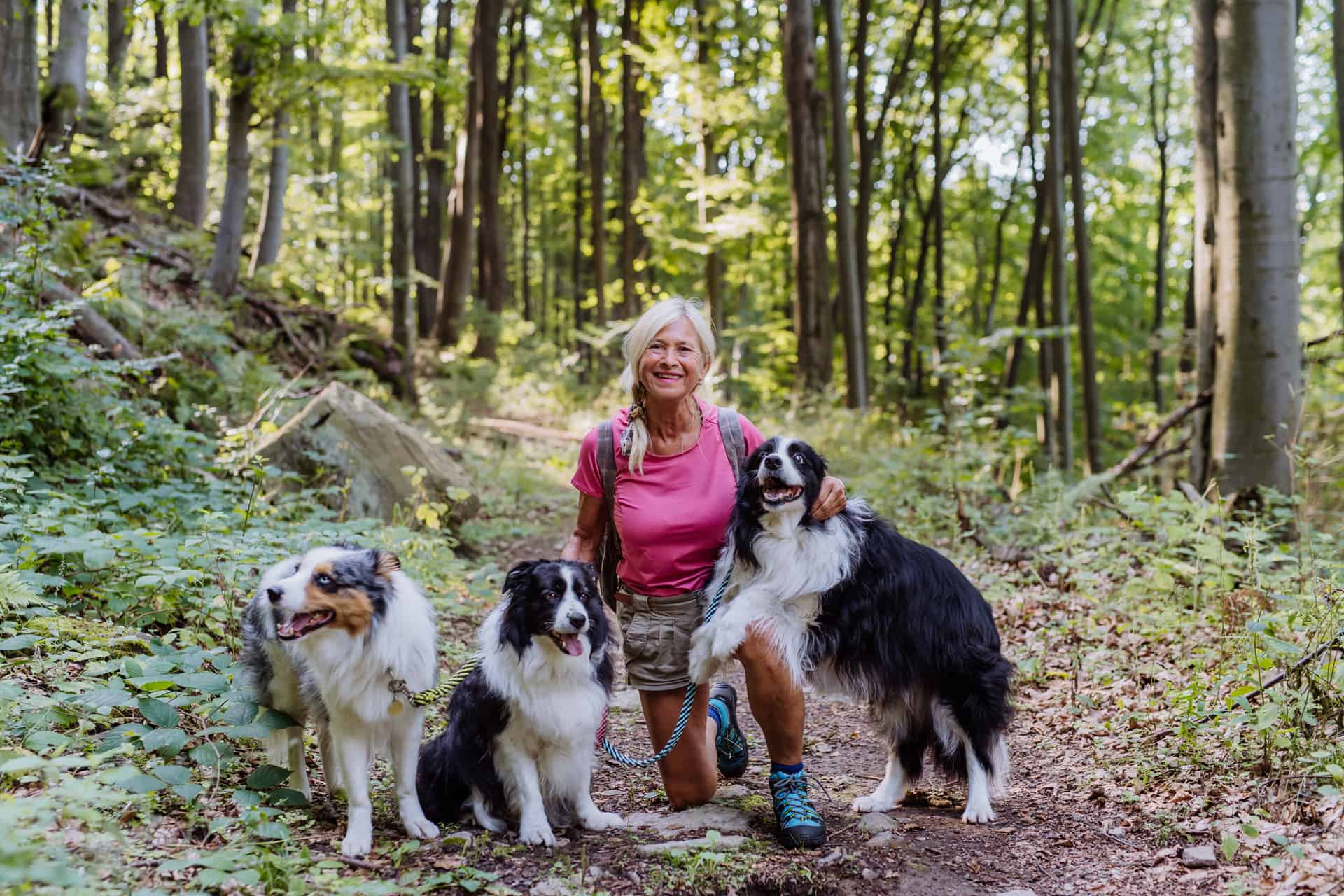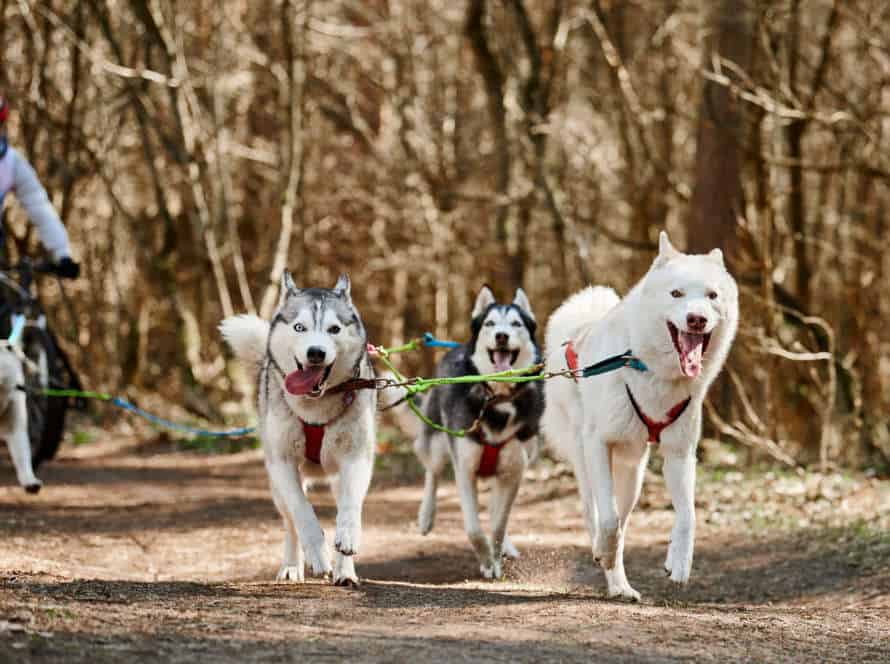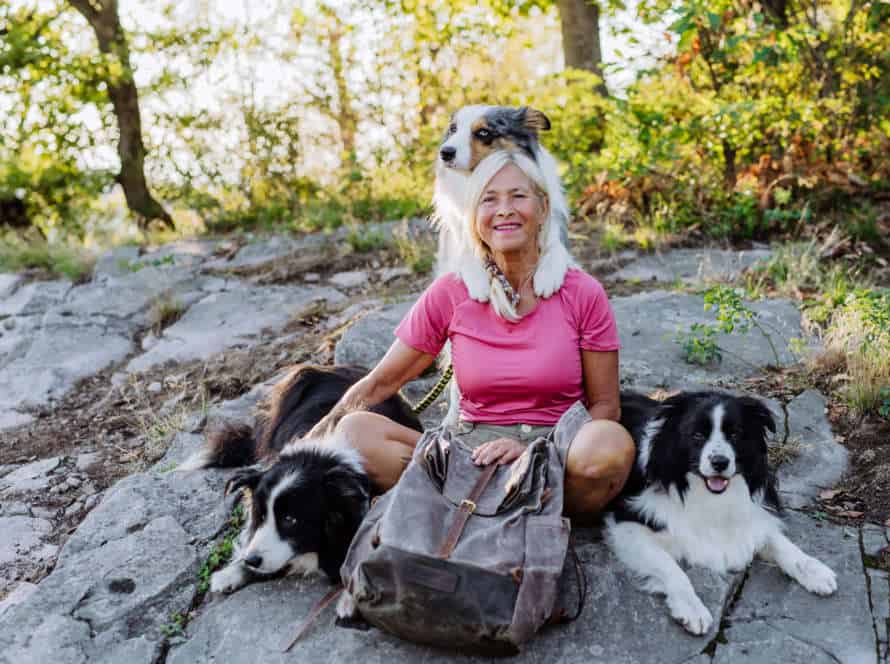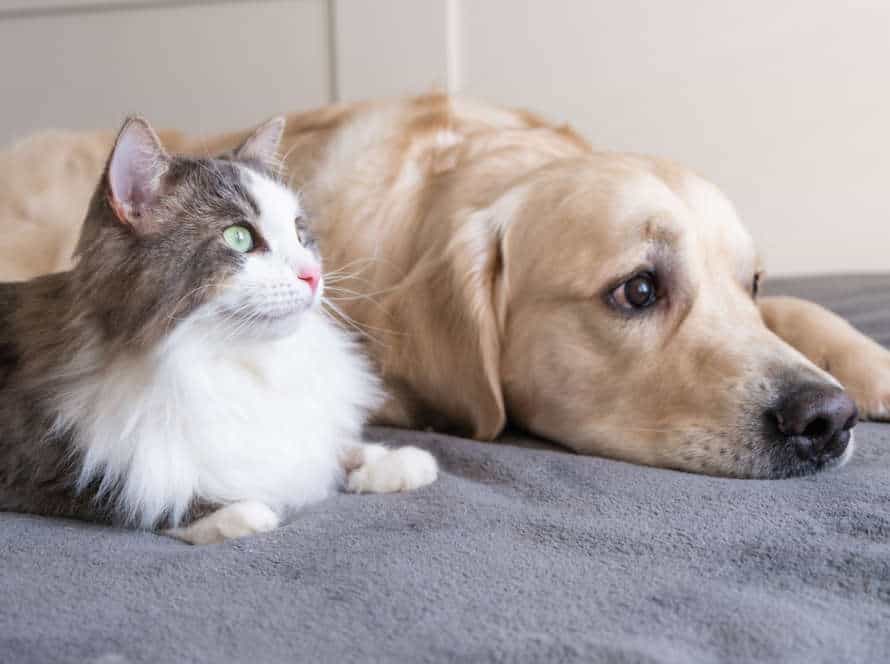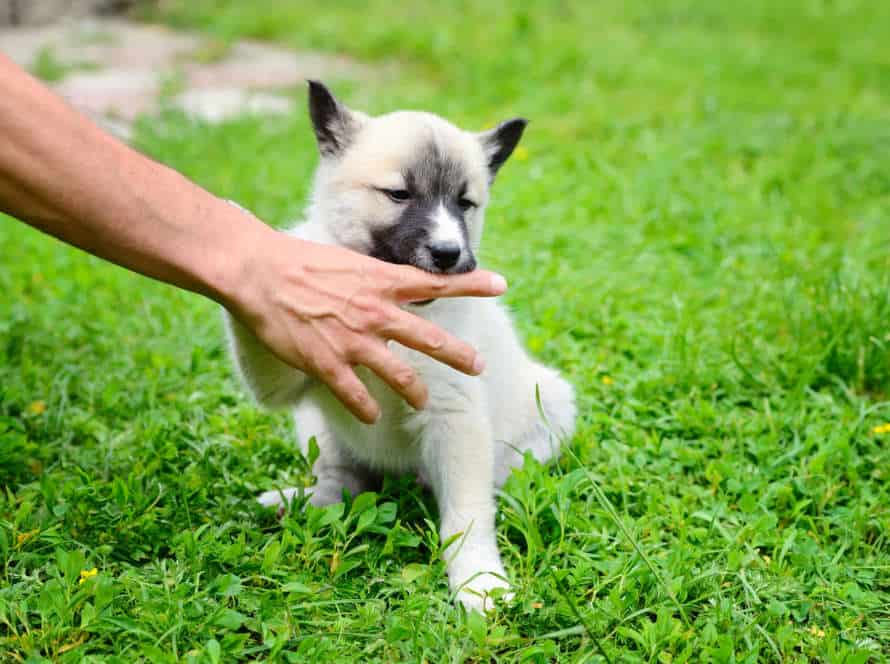Resolving Dog Conflicts: Tips for Keeping the Peace
Conflicts between dogs are a common occurrence and can be serious if not addressed. Here are some tips to help you handle doggy disputes and keep the peace:
- Work out what triggers fights: Observe your fur-babies and see what causes fights, e.g. food, toys, or attention.
- Split them up: If a fight breaks out, quickly intervene using a loud noise, like clapping, or a physical barrier.
- Stay composed: Dogs pick up on tension and hostility, so stay calm during conflicts.
- Train them: Obedience training can help prevent fights.
- Provide enough resources: Dogs may fight over resources such as food or toys, ensure enough for all your dogs.
- Get professional help: If conflicts continue or get violent, get advice from a professional trainer or vet.
Understanding Dog Aggression
Dog aggression can be startling. It is usually caused by fear, anxiety, or guarding of resources. To prevent and control it, you must know the source. Luckily, there are many techniques and methods to assist in resolving these issues and maintain harmony at home.
Identifying the types of aggression in dogs
It is vital to know the different kinds of aggression in dogs. This is to work out the best way to resolve dog disputes and promote peace. Below are the 4 usual types of aggression in dogs and how to recognize them:
- Fear Aggression: Dogs may become aggressive when anxious or feeling threatened. They may show signs like ears lying flat, tail tucked in, and avoiding eye contact.
- Territorial Aggression: Dogs may become aggressive to protect their home or property. This may be by barking, growling, or biting strangers or other animals.
- Social Aggression: Dogs can display social aggression when they think their status or pack order is at risk. These signs include growling, barking, and biting to be in control of other dogs.
- Redirected Aggression: Dogs may act aggressively if they can’t attack the original source. This may involve biting, growling, or snapping at whatever is within view.
Recognizing the signs of aggression
Recognizing aggression in dogs is key. Here are common signs:
- Raised hackles – Hair on back and neck stand up.
- Growling – Aggressive and may bite.
- Lunging and barking – Aggressive behavior, feeling threatened.
- Showing teeth – Warning sign of a bite.
- Stiff body – Tense, tail raised, ears flattened.
If you spot these signs, get help from an expert. To address cause and prevent conflicts.
Understanding the triggers for aggressive behavior
Aggressive behavior in dogs? It’s often caused by fear, anxiety, protecting themselves, or no socializing.
Common triggers include pain, fear of harm, territorialism, and genetics.
To prevent aggressive behavior, it’s important to:
- Provide regular vet check-ups.
- Reward good behavior.
- Teach them to socialize.
- Research breeds before adopting.
Do this and you’ll have a peaceful environment for all.
Addressing Dog Conflicts
Dog conflicts can occur for several reasons. Different personalities, behaviors, a lack of understanding between dogs and humans, or a lack of boundaries. To keep peace in your home, take proactive measures and set boundaries. Here are tips to help you address and resolve issues between dogs:
- Tip 1: Observe and learn what triggers conflicts between your dogs
- Tip 2: Provide separate resources for each dog, such as food bowls, toys, and beds
- Tip 3: Train each dog separately and give them individual attention
- Tip 4: Set boundaries and rules such as no jumping on people or furniture
- Tip 5: Use positive reinforcement to encourage good behavior and discourage bad behavior
- Tip 6: Seek professional help if needed, such as a dog trainer or behaviorist
Minimizing solo territory
Alleviate dog conflicts and keep the peace by reducing solo territory. Avoid scenarios where one pup has exclusive access to a space or resource. Here are some tips:
-
- Supply multiple resources
. Have enough beds, food bowls, and toys for each furry friend. Try separate areas for sleeping and eating to reduce competition.
-
- Vary toys and play areas
. To stop dogs from guarding a spot, switch up toys and play areas. This helps to spread interest and cut down on conflicts.
-
- Train dogs
. Employ positive reinforcement to teach pooches to share and take turns. This will help them be more relaxed around each other, decreasing the chance of struggle.
By reducing solo territory, you can ensure both dogs are content and safe in their environment, reducing the danger of dog conflict.
Avoiding resource guarding attitudes
Resource guarding behavior in dogs can be expressed with growls, bites, and snarls. Tackling these issues can be hard, but there are some tips to help keep the peace. Here’s what to do:
- Employ positive reinforcement to show your pup that sharing is beneficial.
- Keep watch when your dog eats and never criticize them for growling or shielding their food.
- Don’t take things away from your pup without offering something of similar or greater value.
- Identify your dog’s body language and detect signs of agitation and worry.
- Speak to a professional trainer or animal behaviorist if your dog’s resource guarding becomes out of control.
With patience and consistency, you can address and even stop resource guarding behaviors in your beloved pet.
Identifying the play styles of dogs
It’s important to know your dog’s play style. There are 4 main ones: chasing, wrestling, tug-of-war, and gentle play.
Recognizing your pup’s style can help you watch out for conflicts and keep playtime safe and fun for everyone.
Pro tip: When first introducing your dog to a new playmate, monitor them closely. Let playtime get longer and more often, when the dogs are comfortable.
Intervening in Dog Conflicts
Intervening in dog aggression can be tricky. Act fast and firmly, but with caution. To avoid the conflict from getting worse, stay calm and maintain control. Here are some tips for safe intervention:
Separating dogs during conflicts
Conflicts between dogs can be intense and risky. Therefore, it’s essential to know how to separate them safely. Here are some tips to remember:
- Stay relaxed. Dogs can sense your fear and become more aggressive.
- Use a loud and strong command like “stop” or “no”.
- Never use physical force. It could make the dogs angrier.
- Pull them away from the source of conflict separately, and secure them in different rooms or areas.
- Give them space and time to relax before reintroducing them.
- If the conflicts still exist or become worse, think about talking to a professional dog trainer or behaviorist to discover the main causes of the confrontations.
Using positive reinforcement methods to train dogs
Text:
Positive reinforcement can be a great way to train dogs and teach them good behavior. It means giving rewards when they do something you want. Here are some positive reinforcement methods:
- Treats – Give small, healthy snacks when they do something right.
- Praise – Praise them with words like “good job” or “well done“.
- Toys – Use toys to reward or distract from unwanted behavior.
- Timing is key – Rewards should be immediate after the behavior for it to count.
Redirecting and diffusing aggressive energy
Diverting and diffusing hostile energy is a successful technique for stopping and settling conflicts between dogs. Here are a few straightforward tips for keeping the harmony among your furry companions:
- Observe your dog’s body language and conduct. Search for indications of hostility, such as growling, revealing teeth, or raised hackles.
- If any signs of aggression are spotted, step in smoothly and decisively by refocusing your dog’s attention to something else, for example a treat, toy, or order.
- Try not to punish or reprimand your dog for aggressive behavior, as this can heighten the conflict.
- If the conflict continues, attempt to defuse the aggressive energy by isolating the dogs and giving them an opportunity to relax before reintroducing them to each other in a controlled environment.
By following these steps, you can help stop conflicts between your furry friends and guarantee a peaceful home for everyone.
Strategies for Preventing Dog Conflicts
Dogs meeting can lead to conflict. But, it doesn’t have to! With the right strategies, you can keep things peaceful. Learn some tips and tricks here. Keep your home calm and get rid of conflicts between dogs.
Creating structured routines
To prevent dog conflicts and keep peace in a multi-dog house, create structured routines. Here’s how:
- Schedule meal times for each pup and have their food bowls in different spots to avoid resource guarding.
- Make sure every dog gets regular exercise to burn energy and lower the chance of conflict.
- Set up play areas for your dogs and watch them while they’re playing to make sure they get along.
- Train each pup by teaching basic commands and obedience. This builds trust and respect.
By following these routines, you can stop dog conflict and make a happy home for all the dogs.
Supervising interactions between dogs
Supervising dogs when they interact is key to stopping conflicts. If an incident happens though, there are ways to fix it and keep peace.
Here are some strategies:
- Supervise when they eat or share toys.
- Train them to obey commands like “stay,” “drop it,” and “leave it” to stop fighting over resources.
- Socialize them young, with people, other animals, and different environments.
- Neuter/Spay them to reduce aggression.
- To resolve conflicts, stay calm, and if needed, separate the dogs. Don’t punish them, but instead direct their energy elsewhere.
- To keep the peace, owners need to train, supervise, and be patient.
Teaching dogs a strong “Leave it” command
Train your pup to obey a strong “Leave it” command. It’s essential for avoiding and managing issues with other dogs and people. Here’s how to do it:
- Start by holding a treat in a closed fist. Let your pup sniff and paw it. Say “leave it” and wait until they stop trying to get the treat. Reward them with a different treat from your other hand.
- Repeat with various treats, adding distractions like toys and food on the ground.
- Once your dog is leaving objects alone, practice the command on walks or when other dogs and people are around.
- Reward your pup for obeying. Never punish them for not listening.
Train and practice consistently and your pup will be able to obey the “Leave it” command and be a well-mannered and safe companion.
Frequently Asked Questions
1. Why do dogs get into conflicts with each other?
Dogs may get into conflicts with each other due to aggressive or dominant behavior, territorial disputes, or social anxiety.
2. What are some signs of potential dog conflicts?
Signs of potential dog conflicts may include growling, staring, raised fur, stiff body language, and barking or lunging.
3. How can I prevent dog conflicts when introducing a new dog to my household?
Introduce dogs slowly and carefully, supervise their interactions, and provide separate spaces and resources for each dog to prevent territorial disputes.
4. What should I do if my dog is involved in a conflict with another dog?
Immediately remove your dog from the situation and assess any injuries. Seek veterinary care if necessary, and address any underlying behavioral issues that may have contributed to the conflict.
5. Can training help prevent dog conflicts?
Yes, training can help prevent dog conflicts by teaching dogs appropriate social behavior, obedience commands, and impulse control.
6. Should I ever physically intervene in a dog conflict?
No, physically intervening in a dog conflict can put you at risk of injury and escalate the situation. Instead, use distraction techniques or a loud noise to separate the dogs and seek professional assistance if necessary.

